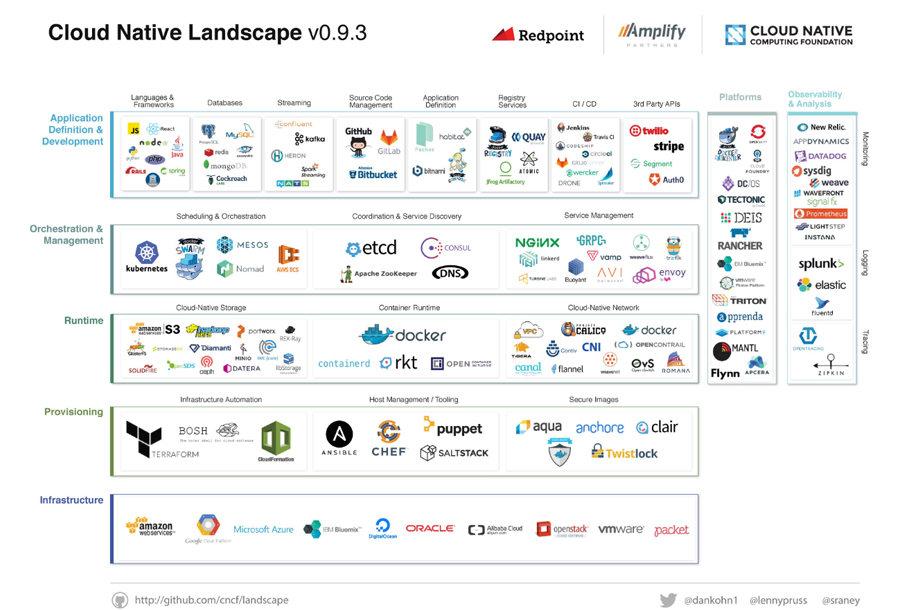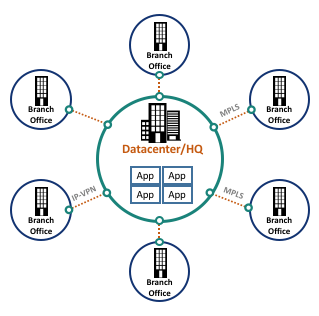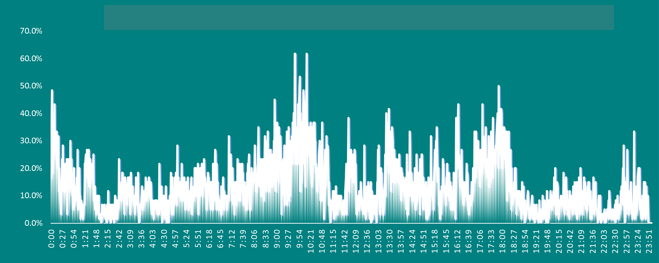Why MPLS and Cloud Applications Don’t Mix
If you’re in charge of delivering and maintaining a global WAN, then you know the headache that this chart can induce.

Why? Because legacy WAN connectivity approaches like MPLS do not address performance challenges for cloud and SaaS applications.
This was not the case 20 years ago.
In the past, these types of applications lived in the corporate data center. All you had to do was deploy MPLS, add WAN Optimization, and you’d be set.
Why doesn’t this model work anymore?
 The major limitation of MPLS is that it requires a termination point for access, and you need a WAN Optimization appliance on each end in order for it to provide real application performance improvements. Deploying a device in your own corporate data center is one thing; however, when you’re dealing with cloud and SaaS applications, you cannot control those locations since those environments are hosted by other companies.
The major limitation of MPLS is that it requires a termination point for access, and you need a WAN Optimization appliance on each end in order for it to provide real application performance improvements. Deploying a device in your own corporate data center is one thing; however, when you’re dealing with cloud and SaaS applications, you cannot control those locations since those environments are hosted by other companies.
Businesses relying on mission-critical cloud/SaaS applications are completely at the mercy of local Internet providers and the congested conditions of the public Internet infrastructure.
So, is there a solution besides hoping that the public Internet will be able to support the performance requirements of cloud-based and SaaS applications? In local regional environments, this may not be the case, but it certainly will become an issue once you traverse oceans and continents.
Latency and packet loss: Public Enemy #1 for applications
The public Internet is prone to high latency and packet loss, which results in poor application performance. Over long distances, high latency can result in employees having to wait several minutes to refresh their screens for business-critical and time-sensitive cloud and SaaS applications.

Latency Fluctuations on Internet from Boston to Shanghai
In addition, packet loss ranging from 10-15% over the Internet is not abnormal between branch offices located in San Jose and China. This results in data having to be sent through the network over and over again. When you add the fact that your data and applications must also traverse a large distance in scenarios like this (latency), employees may have to wait several minutes to refresh their screens.

15-60% Packet Loss on Internet from AWS Beijing to AWS Virginia
For anyone attempting to access mission-critical, time-sensitive applications like Salesforce or SAP Business By Design, this lag in wait time makes the application virtually unusable.
A recent interview we had with Forrester Principal Analyst, Andre Kindness, confirmed these dilemmas, especially when it comes to applications like voice and video conferencing:
“A lot of business professionals are doing voice calls over the internet,” he explained, “But in the world of business where you know packets drop and latency can be an issue, when you are having conversations with people in different parts of the globe, trying to understand those customers, partners, or peers with calls dropping packets and having long delays will make a huge dramatic difference on the business and make it very difficult to build relationships.”
Is SD-WAN an answer?
Edge-based SD-WAN may be an answer for local deployments, but it is definitely not the answer for global ones. SD-WAN is not a new connectivity option; it merely leverages already existing connections, such as the public Internet or a hybrid scenario that includes both the public Internet and MPLS links for specific applications.
A new class of connectivity is required.
To solve global application delivery issues you need a global private network that provides the flexibility of the public Internet and the reliability of MPLS. To that end, we designed Aryaka’s network to be the only global SD-WAN with WAN so you can successfully deliver any application, anywhere in the world. We not only provide secure access to data and applications from the corporate data center, but also to any cloud and SaaS environment.
Global enterprises access Aryaka’s Managed SD-WAN through their local Internet and connect to one of our points of presence (PoPs) around the world. This enables them to be up and running on Aryaka’s private WAN within hours or days, compared to the months it takes for an MPLS deployment.

The network is also layered with WAN Optimization, which helps increase throughput over the network and accelerates applications no matter where they reside and from where their end users access them.
How fast can applications be deployed and accelerated on Aryaka?
One of the major benefits of using Aryaka’s global SD-WAN is that deployment and application performance are dramatically accelerated. We can look to one of one of our customers for an example:
Recently, JAS Forwarding Worldwide, one of the global leaders in freight forwarding and logistics, started using Aryaka to speed up performance and improve the quality of their Zoom video conferencing service for executives and employees around the world.
Using Zoom over the Internet provided challenges for JAS. Their legacy Internet-based network failed to meet quality expectations and resulted in frequent disconnects during video conferencing calls.
Once Aryaka was deployed for Zoom video conferencing by JAS, they saw almost instantaneous improvement in audio and video quality, as well as delivery, over the video conferencing platform globally.
“All it took was a phone call to Aryaka, and within just minutes, the network was up and ready for all traffic from Zoom. We experienced better-than-MPLS video conferencing quality with Aryaka at a fraction of the cost,” said Mark Baker, CIO of JAS. “Not only did end users stop complaining about voice and video quality issues, the usage of the Zoom platform within JAS started to rise.”
The solution for complete application delivery
IT staff might be able to relate to the amount of applications shown above and the difficulty involved to deliver them to end users worldwide with optimum performance. We sympathize with the task they have at hand, which is why we have designed our global SD-WAN solution to resolve these issues in a matter of hours with simplicity never seen before on any network.
We invite you to speak with us or our customers about how Aryaka’s global SD-WAN can help you address global connectivity needs. You can also get started with a proof of concept today.

